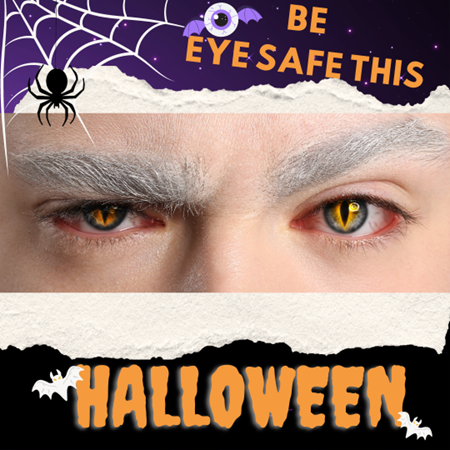Posted by: Raleigh Ophthalmology in Eye Health


Are you ready for a fun Halloween celebration this year? As Halloween approaches, we urge costume shoppers to avoid non-prescription lenses after a study finds chlorine, metal, and other harmful chemicals during product testing. Wearing costume contact lenses on Halloween can be a real scream. However, the scare from non-prescription contact lenses can be all too real when chemical exposure or potentially blinding infections occur. To help prevent eye damage and vision loss, we want to warn costume shoppers about over-the-counter decorative lenses. Studies found that several varieties tested positive for chlorine and other harmful chemicals.
A research article published in the Eye & Contact Lens – Science and Clinical Practice journal found chlorine in three types of non-prescription costume contact lenses. Iron was found on four pairs of lenses. The chemicals may come from colorants used to tint and create playful patterns on the lenses. One pair seeped chlorine after a routine rinse, prompting concern from researchers about toxicity to the eye. The study also noted that colorants printed or pressed onto some decorative lenses create an uneven texture. Those rough surfaces could scratch the eyes, potentially allowing bacteria to cause infection and even blindness.
Despite that sales restriction, many decorative lenses of unknown origin can be purchased online. Around Halloween, they often pop up for sale at beauty stores or even gas stations. The problem is that contact lenses not approved by the FDA may be made with materials that can harm the eyes by causing corneal abrasion or keratitis. Both conditions can result in scarring that impairs vision or causes blindness. For this reason, eye doctors advise against wearing decorative lenses without a prescription.
To safely wear decorative contact lenses this Halloween or any time of the year, the American Academy Of Ophthalmology recommends following these guidelines:
- Only buy decorative contact lenses from retailers who require a prescription and sell FDA-approved products.
- If you do not have a contact lens prescription, obtain a valid prescription and eye exam from your eye doctor.
- Even those with perfect vision need to get examined and fitted for the correct size contacts by an eye health professional. Uncomfortable lenses that can scratch the eye’s surface, creating an opening for infection.
- Redness, swelling, excessive discharge, pain, or discomfort can signal an eye infection. If you have these symptoms, see an eye doctor immediately.
We Wish You A Safe and Spooky Halloween!

